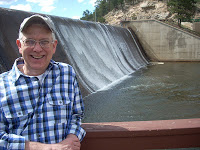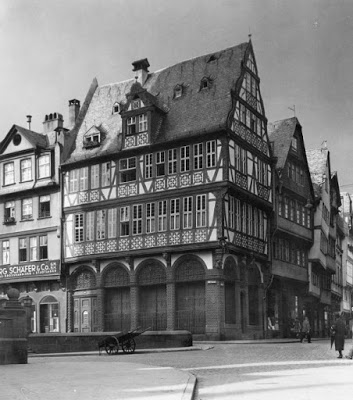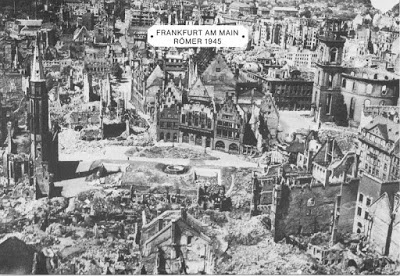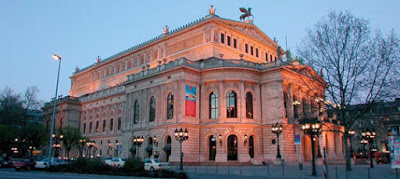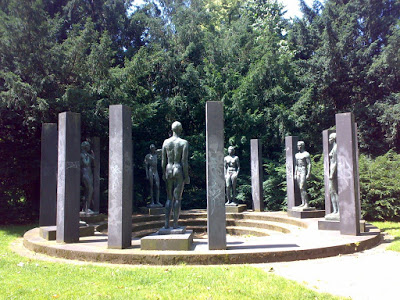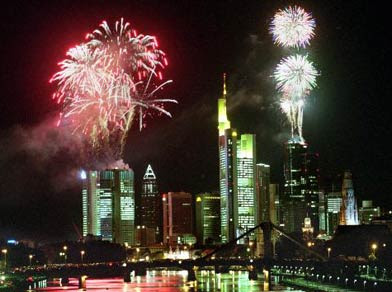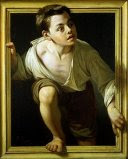Last
weekend while travelling south along I-25, we approached the Broadway exit. A
large American flag held aloft on a sturdy pole sunk in concrete and sitting at
the top of a rampart flapped in the breeze. “I’ve never noticed that before,”
my friend commented.
weekend while travelling south along I-25, we approached the Broadway exit. A
large American flag held aloft on a sturdy pole sunk in concrete and sitting at
the top of a rampart flapped in the breeze. “I’ve never noticed that before,”
my friend commented.
“Nor
I. Must be new,” I responded.
I. Must be new,” I responded.
Her
next comment was about how good it is to live in America. I agreed with my
rather minimal statement that I, too, was happy to live here. I believe for her
the sentiment is rather standard fare formed from listening to too much
conservative talk radio. We don’t talk about that. For me the issue of being
“proud to be an American” is something quite different. She seems some kind of
absolutist while I am surely a relativist. So are we philosophers? Since we
spotted the flag on I-25 I’ve been thinking about patriotism—perhaps that does make
me a philosopher of sorts.
next comment was about how good it is to live in America. I agreed with my
rather minimal statement that I, too, was happy to live here. I believe for her
the sentiment is rather standard fare formed from listening to too much
conservative talk radio. We don’t talk about that. For me the issue of being
“proud to be an American” is something quite different. She seems some kind of
absolutist while I am surely a relativist. So are we philosophers? Since we
spotted the flag on I-25 I’ve been thinking about patriotism—perhaps that does make
me a philosopher of sorts.
I
believe patriotism most dramatically relates to an image of heroes who put
their very lives on the line for their identity as part of a particular people.
The history of any Fatherland or Motherland obviously has its origins in the
LAND. For me the land is always the Flint Hills of Kansas. I grew up in wide
open spaces with a broad river valley and low bluffs nearby. The landscape was
further defined by creeks: so grassy highlands and wooded valleys with stretches
of plowed fields in the bottomlands of waterways are all a part of my
fatherland. Agriculture abounded there.
believe patriotism most dramatically relates to an image of heroes who put
their very lives on the line for their identity as part of a particular people.
The history of any Fatherland or Motherland obviously has its origins in the
LAND. For me the land is always the Flint Hills of Kansas. I grew up in wide
open spaces with a broad river valley and low bluffs nearby. The landscape was
further defined by creeks: so grassy highlands and wooded valleys with stretches
of plowed fields in the bottomlands of waterways are all a part of my
fatherland. Agriculture abounded there.
In
my particular patria a military
presence with a long history lent gravity and opened me to a larger society and
world. I grew up around the U.S. Army’s Seventh Cavalry; Custer was once
stationed at Fort Riley just across the river from our town. The presence of historic
stone buildings that housed both the officers and the fine horse stock of the
cavalry, of wooden barracks for the enlisted men, of parade grounds, of rifle
ranges, of helicopters coming and going in the air around the base’s heliport,
of convoys made up of personnel carriers and artillery, jeeps and guns, trucks
and heavy machinery often impeding traffic on highways, and of our lively
community that entertained GIs provided endless variety for a Kansas town me.
Then there were the children of Army families in our school population, and for
me, the family-owned IGA store providing groceries for families of GIs, Civil
Service employees, as well as the townies like me.
my particular patria a military
presence with a long history lent gravity and opened me to a larger society and
world. I grew up around the U.S. Army’s Seventh Cavalry; Custer was once
stationed at Fort Riley just across the river from our town. The presence of historic
stone buildings that housed both the officers and the fine horse stock of the
cavalry, of wooden barracks for the enlisted men, of parade grounds, of rifle
ranges, of helicopters coming and going in the air around the base’s heliport,
of convoys made up of personnel carriers and artillery, jeeps and guns, trucks
and heavy machinery often impeding traffic on highways, and of our lively
community that entertained GIs provided endless variety for a Kansas town me.
Then there were the children of Army families in our school population, and for
me, the family-owned IGA store providing groceries for families of GIs, Civil
Service employees, as well as the townies like me.
Thus
my patria was racially mixed, with
multiple languages, mixed-race families, and people who had lived all over the
world—especially Germany and Japan as I recall it. Soldiers marched in local
parades and cannons and other Army equipment impressed the youngsters and brought
tears to the eyes of elders.
my patria was racially mixed, with
multiple languages, mixed-race families, and people who had lived all over the
world—especially Germany and Japan as I recall it. Soldiers marched in local
parades and cannons and other Army equipment impressed the youngsters and brought
tears to the eyes of elders.
My
fatherland was rather new by world standards yet as a youngster I felt
connected to the antiquity of the place by the presence of an old log cabin church
and by stories of my ancestors who had long lived in the area. Still the Hoyle
and Schmedemann families arrived only three generations before my advent. My
great grandparents came to Kansas to homestead. Some may have come to help
assure that Kansas would be a free state in the political heat up that
eventuated in the US Civil War. Yet in my family there were no ultimate
patriots—those who made the ‘ultimate sacrifice’ for their country—in any of
the stories I heard.
fatherland was rather new by world standards yet as a youngster I felt
connected to the antiquity of the place by the presence of an old log cabin church
and by stories of my ancestors who had long lived in the area. Still the Hoyle
and Schmedemann families arrived only three generations before my advent. My
great grandparents came to Kansas to homestead. Some may have come to help
assure that Kansas would be a free state in the political heat up that
eventuated in the US Civil War. Yet in my family there were no ultimate
patriots—those who made the ‘ultimate sacrifice’ for their country—in any of
the stories I heard.
Growing
up I heard lots of talk of such sacrifices of life, but most of them were in sermons
not about the country but quoting a “no greater love” value as applied to the
ultimate vicarious death of Jesus as the Christ. Religion figured heavily in my
fatherland.
up I heard lots of talk of such sacrifices of life, but most of them were in sermons
not about the country but quoting a “no greater love” value as applied to the
ultimate vicarious death of Jesus as the Christ. Religion figured heavily in my
fatherland.
I
became aware of the country as something much larger than my state when I heard
my parents talk about the differences between Ike Eisenhower and Adlai Stevenson, then when I met men who had served in the Korean conflict, when I
further realized just what the US Army did besides entertain us with wild
stories and exotic tattoos, when I became aware of missile crises, the Cold
War, the building of the interstate road system, the anti-communist diatribe,
the deaths of national leaders, the threat of the draft, the Vietnam non-war,
the peace movement, and the growing realization that our USA motivations
idealized in myth and PR announcements didn’t well match my own vision of reality
or basic values.
became aware of the country as something much larger than my state when I heard
my parents talk about the differences between Ike Eisenhower and Adlai Stevenson, then when I met men who had served in the Korean conflict, when I
further realized just what the US Army did besides entertain us with wild
stories and exotic tattoos, when I became aware of missile crises, the Cold
War, the building of the interstate road system, the anti-communist diatribe,
the deaths of national leaders, the threat of the draft, the Vietnam non-war,
the peace movement, and the growing realization that our USA motivations
idealized in myth and PR announcements didn’t well match my own vision of reality
or basic values.
Welcome
to thoughtful adulthood, Hoyle.
to thoughtful adulthood, Hoyle.
AND
EVEN MORE THAN THAT, THERE WAS ALWAYS THAT NAGGING REALIZATION THAT IF ANYONE
REALLY KNEW ME, THEY CERTAINLY WOULDN’T LET ME BE A PATRIOT IN ANY SENSE OF THE
WORD.
EVEN MORE THAN THAT, THERE WAS ALWAYS THAT NAGGING REALIZATION THAT IF ANYONE
REALLY KNEW ME, THEY CERTAINLY WOULDN’T LET ME BE A PATRIOT IN ANY SENSE OF THE
WORD.
But
I am a patriot who feels a deep sense of meaning in being American. I love it
but not in an exclusivist, better-than-any-other identity or country.
I am a patriot who feels a deep sense of meaning in being American. I love it
but not in an exclusivist, better-than-any-other identity or country.
© 25 Sep 2013
About the Author
Phillip Hoyle
lives in Denver and spends his time writing, painting, and socializing. In
general he keeps busy with groups of writers and artists. Following thirty-two
years in church work and fifteen in a therapeutic massage practice, he now
focuses on creating beauty. He volunteers at The Center leading the SAGE
program “Telling Your Story.”
lives in Denver and spends his time writing, painting, and socializing. In
general he keeps busy with groups of writers and artists. Following thirty-two
years in church work and fifteen in a therapeutic massage practice, he now
focuses on creating beauty. He volunteers at The Center leading the SAGE
program “Telling Your Story.”
He also blogs at artandmorebyphilhoyle.blogspot.com
